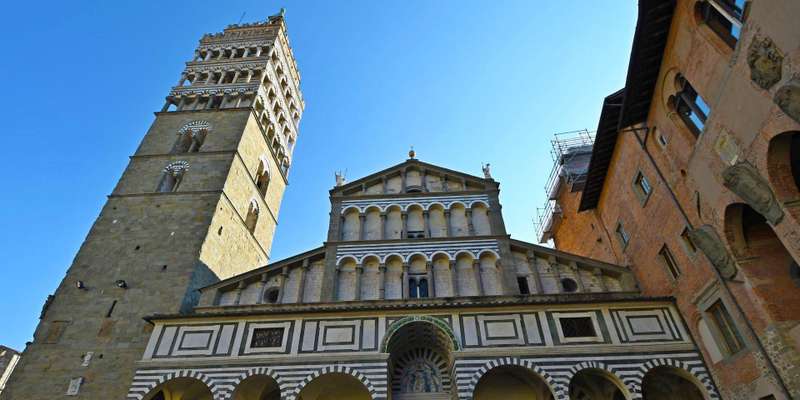- Home
- Useful Tips
- Traditional olive harvest...
Every autumn, travelers to Tuscany's hidden gem Pistoia face the same dilemma: how to experience the authentic olive harvest without the crowds of more famous regions. With 72% of visitors missing the optimal harvest window by just two weeks, many return home having only seen processed oil in shops rather than the vibrant tradition itself. The frustration is palpable – you can taste the difference between mass-produced and freshly pressed oil, but finding working farms that welcome visitors requires local knowledge. Beyond timing, there's the challenge of distinguishing genuine participatory experiences from staged tourist activities. This disconnect leaves many food-loving travelers settling for less, unaware that Pistoia's hills hold some of Italy's best-kept harvest secrets where you can still get your hands on ripe olives alongside multi-generational farming families.


Why October's last weeks are golden for Pistoia's olive groves
The microclimate of Pistoia's valley creates a later harvest than coastal Tuscany, with most farms beginning their raccolta in the last ten days of October. This timing balances perfect olive ripeness with comfortable working temperatures – crucial when you're spending hours outdoors. Local growers watch for the 'invaiatura,' when olives transition from green to purple, signaling peak oil content. Unlike southern regions where harvests start in September, Pistoia's elevation means early pickers risk bitter, underdeveloped flavors. The sweet spot typically falls between October 20th and November 5th, though this shifts slightly each year based on summer rainfall. Smart visitors plan flexible itineraries during this window, as farms make last-minute decisions based on daily olive inspections. Those arriving in early October often find themselves watching preparatory work like net laying, while late November visitors see only the pressing phase – missing the harvest's most hands-on moments.
Finding authentic farms that welcome harvest participants
Beyond checking harvest calendars, identifying truly participatory experiences requires understanding Pistoia's agricultural culture. The best farms are often small family operations maintaining century-old traditions, not commercial agriturismi with scheduled demonstrations. Look for mentions of 'raccolta partecipata' (participatory harvest) rather than just 'degustazione' (tasting). Local tourist offices keep updated lists of farms needing extra hands, particularly those practicing 'brucatura' – the traditional hand-picking method. These multi-generational teams work slower than machine-assisted farms, creating space for visitors to learn proper twisting techniques without pressure. Many require advance contact via phone (English-speaking staff are rare) and appreciate volunteers staying at least half a day. Bring sturdy shoes and clothes you don't mind staining – olive juice doesn't wash out. The reward? Being invited to the post-harvest meal where new oil gets drizzled over ribollita soup, a privilege no paid tour can guarantee.
From grove to mill – timing your pressing visit right
Witnessing the transformation from fruit to oil completes the harvest experience, but Pistoia's small mills operate on tight schedules. Most farms deliver their day's pickings within 24 hours to prevent fermentation, meaning late afternoons and evenings offer the best chance to see the cold-press process. The historic Frantoio del Greppia near Sant'Agostino keeps its original stone wheels alongside modern equipment, offering visitors a comparative look at extraction methods. Timing is everything – arrive as the olives get washed (usually around 4pm) and you'll see the entire 90-minute cycle culminating in that magical first green stream. Some mills sell 'olio nuovo' straight from the press, its peppery bite a revelation compared to store-bought versions. Those preferring a structured experience can find small-group mill tours that coordinate with partner farms' harvest schedules, ensuring you follow your picked olives through the entire journey.
Beyond the harvest – extending your olive experience
For travelers who miss the narrow harvest window or want deeper immersion, Pistoia offers year-round olive connections. Winter brings pruning courses where you'll learn how shaping trees affects next year's yield. Spring's 'potatura' months reveal blossoming olive flowers often overlooked by tourists focused on vineyards. Several farms host 'oil school' weekends teaching sensory evaluation skills to distinguish Pistoia's delicate oils from stronger southern varieties. The town's weekly market (Saturdays at Piazza della Sala) features farmers selling limited batches of single-grove oils with tasting notes – look for the 'DOP Lucca' label indicating local provenance. Those seeking souvenirs should bypass generic shop offerings for the consortium-run shop at Via degli Orafi 21, where bottles include harvest date and acid level documentation. However you engage, remember Pistoia's olive culture thrives in slow moments – the after-lunch debate over oil-drenched bread, not just the harvest frenzy.
